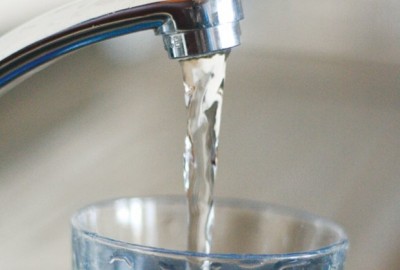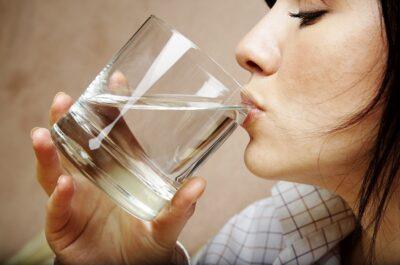We drink it, we wash with it and we water our garden with it. Yet what exactly is in our nation’s tap water and is it really safe?
Tap water comes from surface water (including reservoirs, lakes and rivers) or groundwater (from artesian and deep wells). Before it comes through our faucets, however, most tap water has gone through a cleaning process designed to destroy bacteria and parasites. Many US cities rely on turn-of-the-20th century systems and out-of-date technology to deliver this “clean” water to our homes. The aging and, in many cases, deteriorating water network includes pipes that can easily break and inadequate filtering for 21st century chemicals and other toxins.
Government regulations require communities to create and publish annual reports about the safety and quality of their drinking water. The problem is that some of these reports may contain incomplete or misleading information. Another problem is the Environmental Protection Agency’s weak standards for what is safe and what is not safe.
For example, the National Resources Defense Council (NRDC) reports that arsenic is present in the drinking water of 22 million Americans at average levels of five ppb (parts per billion), which is half of the EPA standard that went into effect in 2006.
Ultra-Efficient Water Filter Fits In Your Pocket! [2]
Many scientists, however, believe that this number is arbitrary and that there is no safe level for arsenic in drinking water. Arsenic has been linked to certain cancers, to birth defects and reproductive problems.
But it’s not just arsenic. Here are some of the other toxins that are common in tap water:
- Lead, which can cause brain damage in infants and young children. The corrosion of pipes and plumbing fixtures causes lead to enter our water supply.
- Chlorine, which is placed in water as a disinfectant but can cause more harm than good. Some studies have shown chlorine to be associated with bladder and rectal cancer and with asthma.
- Radon, the rocket fuel perchlorate and other carcinogens or otherwise toxic chemicals.
- Fluoride, which has been shown to actually cause cavities rather than prevent them when consumed in high quantities. It can cause other problems, too, ranging from a weakened immune system to accelerated aging.
- Aluminum, which has been tied to Alzheimer’s disease. The substance also has been tied to liver disease, skin disorders, Parkinson’s disease and learning disabilities in children.
- Giardia and cryptosporidium, chlorine-resistant protozoa that have been responsible for outbreaks of gastrointestinal disease.
In many cities, municipal water supplies are threatened by industrial or sewage contamination. Other cities are susceptible to agricultural pollution containing pesticides, sediment and nitrogen. Additional contamination can come from sediments from floods and debris from wildfires.
The above list just scratches the surface of the contaminants in tap water. In fact, one study of municipal water supplies revealed more than 2,000 toxins.
(To read our previous story about the drugs that are in your drinking water, click here [4].)
Many commercial brands of bottled water contain nothing more than tap water. So what is a concerned citizen to do? One solution is to purchase and use an effective home water filtration system. Another option is to obtain fresh water from a gravity-fed natural spring. There are a surprising number of them throughout the country. You can check websites such as findapspring.com to locate the one nearest you.
In addition, here are a few other tips to help you drink cleaner, safer water:
- Use cold water for drinking and cooking. Hot water is more likely to contain higher lead levels.
- If you haven’t used a water faucet for six hours or more, let the cold water tap run until it becomes cold to help flush out impurities.
- Replace strainers often, as they can accumulate debris and sediment.
- If your water has an unusual smell or taste, contact your water department.
- Avoid refilling single-use plastic water bottles that can cause chemicals to leach into the water.
An informed and involved public is the best way to keep our water supplies safe. Read your community’s report. Ask questions and urge your legislators to strengthen standards on the safety of our public drinking water.
Do you trust tap water? Share your thoughts on the safety of drinking water in the section below:
Get $600 Worth Of Survival Blueprints … Absolutely Free! [5]


